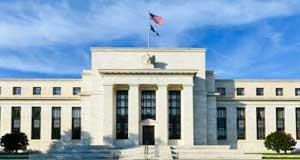 US markets posted their seventh successive monthly gain in October, while markets in Europe also had a decent month, with the FTSE100 making its best gain since May. The EuroStoxx 50 also outperformed, closing at its highest level since February 2015, as easy monetary policy from the ECB, along with an improving economy trumped any concerns, about rising geopolitical tensions across the region.
US markets posted their seventh successive monthly gain in October, while markets in Europe also had a decent month, with the FTSE100 making its best gain since May. The EuroStoxx 50 also outperformed, closing at its highest level since February 2015, as easy monetary policy from the ECB, along with an improving economy trumped any concerns, about rising geopolitical tensions across the region.
It’s set to be a busy start to November today, with European markets set to start the month on the front foot, as we look ahead to tonight’s Federal Reserve rate decision, as well as the small matter of some important UK and US economic data leading up to that.
We’ll come on to the FOMC decision in a minute, but before that we have the latest UK manufacturing PMI numbers for October which are expected to hold near the levels we saw in September at 55.9.
There has been a lot of handwringing about what the Bank of England might decide to do at tomorrow’s rate meeting when it is widely expected that the MPC will raise rates for the first time in ten years.
Recent economic data has shown that the UK economy has started to show signs of faltering consumer spending, which to a large extent has been brought about by the rise in prices, caused by the pounds recent weakness.
That being said the latest Q3 GDP number showed the UK economy expanded more than expected by 0 4%, and with unemployment at 42 year lows it could well be only a matter of time before wages growth starts to pick up.
Recent PMI data has also shown some weakness, particularly in the construction sector where it has been speculated that the sector could be in recession, something I find hard to square with the number of cranes currently dotted around the London skyline.
Manufacturing has been shown to be a bright spot and the expectation is that should continue with today’s latest numbers, if they come in as expected. A weak number could throw a significant amount of shade over tomorrow’s rate decision, and undermine some of the pounds recent gains over the past couple of days, which were also aided by yesterday’s comments from the EU’s Brexit negotiator Michel Barnier that he was ready to speed up Brexit talks.
Last month’s latest US jobs numbers showed that employment growth slowed sharply in September as a result of the US hurricane season. The September ADP report showed a slowdown to 135k jobs from 237k, and it is widely expected that the October numbers will show a significant rebound back to 200k.
Recent ISM reports have also shown fairly strong employment components, along with decent headline numbers, however these have diverged in recent months. Both manufacturing and non-manufacturing showed decent employment components in September against poor headline numbers from ADP and the Bureau for Labour Statistics.
This rather begs the question is whether there is a data lag between the ISM and the official numbers with today’s manufacturing report expected to show a slight slowdown from 60.8 to 59.4. Bear in mind however that yesterday saw the Chicago manufacturing PMI blow the doors off, coming in ahead of expectations at 66.2, while consumer confidence hit its best levels since December 2000.
Today’s FOMC meeting is expected to be fairly low-key despite all the speculation about who will replace Fed chair Janet Yellen, as well as vice chair Stanley Fischer who has already departed.
Balance sheet normalisation has already begun and with nothing in the way of new economic forecasts or projections, attention is likely to remain on next month’s meeting when the Fed is expected to raise rates again by another 25 basis points. By then we’ll also know who will be replacing Janet Yellen as Fed chief with speculation growing that we could find out as soon as this week.
EURUSD – starting to squeeze back towards the 1.1670/80 level which acted as support at the end of last week. The completion of this head and shoulders top reversal opens up the prospect of a move towards 1.1230. Initial target is a move towards 1.1390 while any pullbacks need to overcome the 1.1680 level to reduce downside risk.
GBPUSD – continues to edge higher, yesterday’s break of the 1.3220 area opens up the 1.3340 level. Support remains back near the 100 day MA is as well as trend line support from the March lows which comes in at the 1.3030 area.
EURGBP – closing in on the 200 day MA at 0.8755 after slipping below trend line support from the November 2015 lows at 0.8825. A move through here could see a sharp move towards 0.8620. We need to recover back above the 0.8870 level to argue for a return to the 0.8920 area.
USDJPY – last week’s failure at the 114.40 level keeps the current range intact, with a break targeting the 115.60 area. Support comes in at the 113.20 area and last week’s low, with a break retargeting the 112.40 area.












